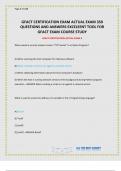Summary
Ch4-5 Summary An Introduction to International Economics, ISBN: 9781108455169 ECON0007 - The World Economy (ECON0007)
- Course
- Institution
- Book
This is a summary of the readings we completed for World Economy in 2020/21, which was from Reinert (2020): An Introduction to International Economics.
[Show more]














